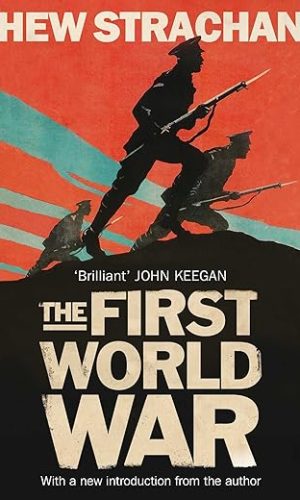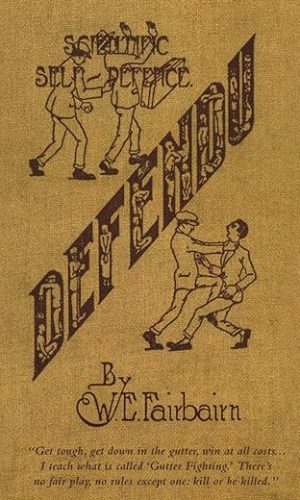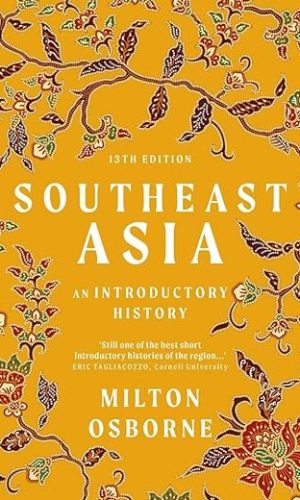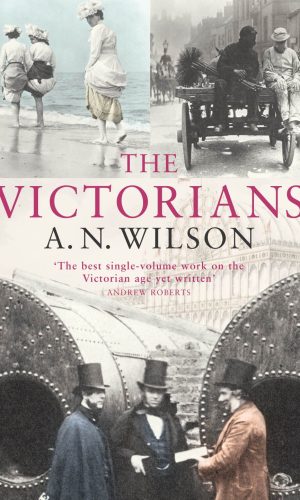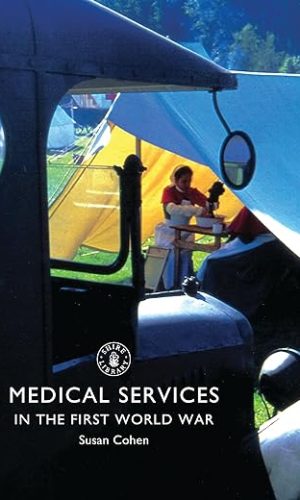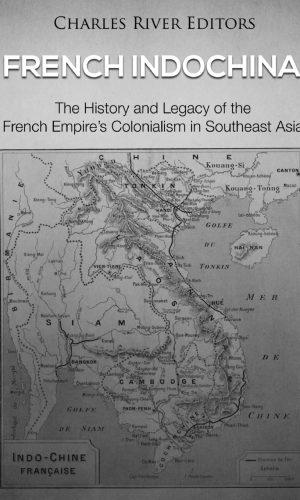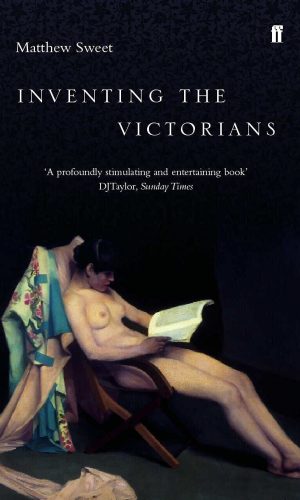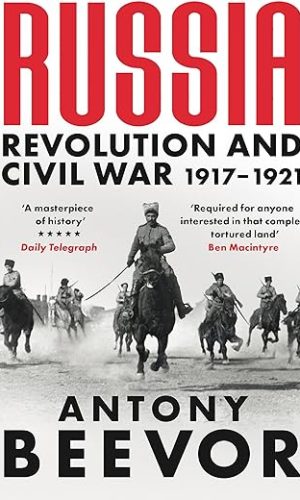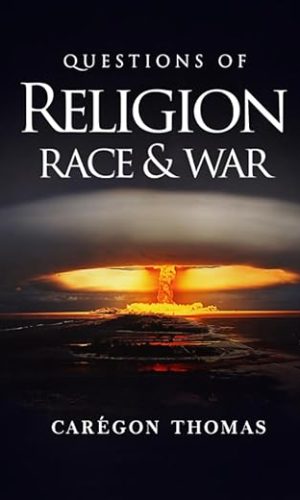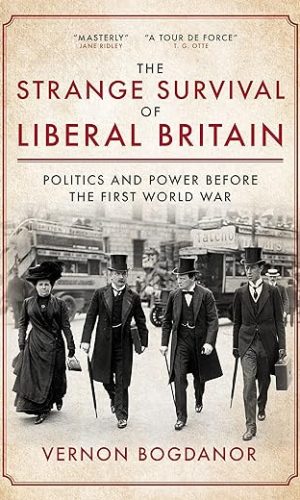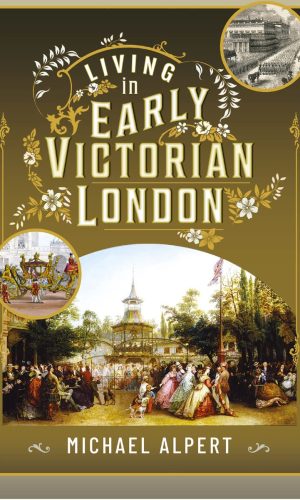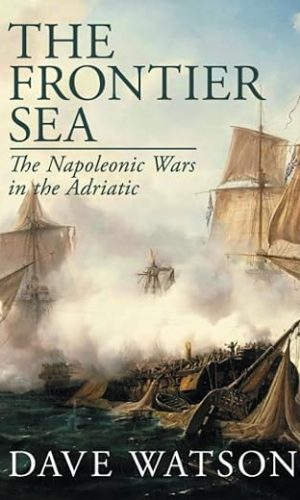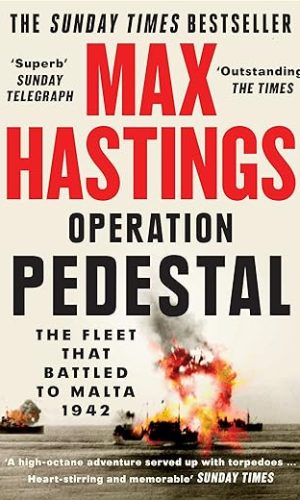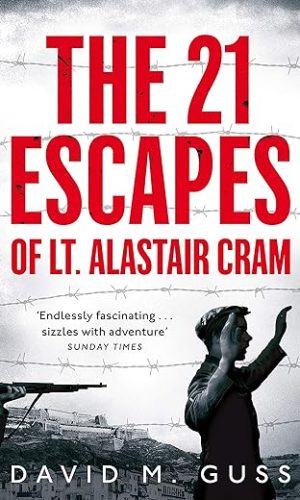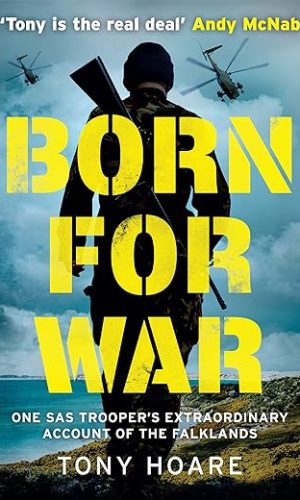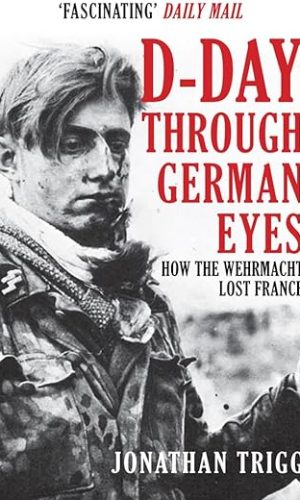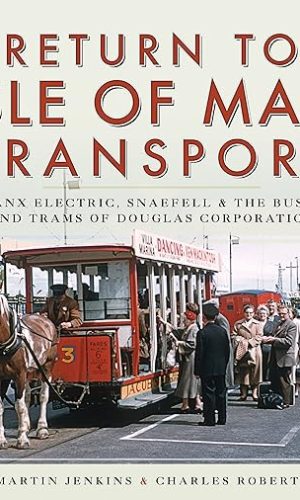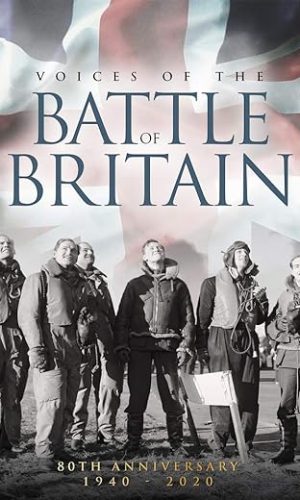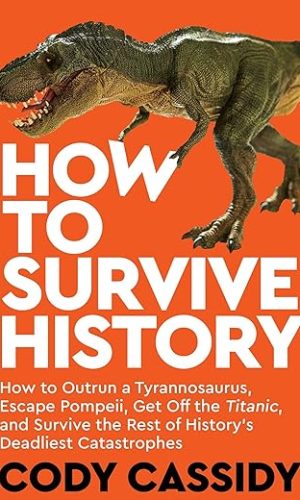-
The First World War: A New History
A brilliant and penetrating new history of the First World War by one of the world’s foremost experts on the conflict. Reissued with a new introduction from the author.Hew Strachan is one of the world’s foremost experts on the Great War of 1914-18. His on-going three-volume history of the conflict, the first of which was published in 2001, is likely to become the standard academic reference work: Max Hastings called it ‘one of the most impressive books of modern history in a generation’, while Richard Holmes hailed it as a ‘towering achievement’.
Now, Hew Strachan brings his immense knowledge to a one-volume work aimed squarely at the general reader. The inspiration behind the major Channel 4 series of the same name, to which Hew was chief consultant, THE FIRST WORLD WAR is a significant addition to the literature on this subject, taking as it does a uniquely global view of what is often misconceived as a prolonged skirmish on the Western Front. Exploring such theatres as the Balkans, Africa and the Ottoman Empire, Strachan assesses Britain’s participation in the light of what became a struggle for the defence of liberalism, and show how the war shaped the ‘short’ twentieth century that followed it.
Accessible, compelling and utterly convincing, this is modern history writing at its finest.
Read more
£7.30£10.40The First World War: A New History
£7.30£10.40 -
Conflict and Tension between East and West 1945-1972 Revision Guide: Get Revision with Results (Oxford AQA GCSE History)
This Conflict and Tension between East and West 1945-1972 Revision Guide is part of the popular Oxford AQA GCSE History (9-1) series. Written by our original author team to match the new AQA specification, this guide covers exactly what your students require to succeed in the Paper 1 Conflict and Tension between East and West Wider World Depth Study exams.
– Recap key events of the Cold War with clear visual diagrams and brief points
– Apply knowledge with targeted revision activities that tests basic comprehension, then apply understanding towards exam-style questions
– Review and track revision with progress checklists, suggested activity answers and Exam Practice sections
– Step-by-step exam guidance based on the popular ‘How to’ student book feature
– Examiner Tip features most up-to-date expert advice and identifies common exam mistakes
– Boost student confidence on all AQA GCSE Conflict and Tension question types with revision activities such as Source Analysis and How Far Do You Agree
– Perfect for use alongside the Student Book and Kerboodle, or as a stand-alone resource for independent revision.
This revision guide helps your students Recap, Apply, and Review their way towards exam success.Read more
£7.40 -
Conflict and Tension in Asia 1950-1975 Revision Guide: Get Revision with Results (Oxford AQA GCSE History)
This Conflict and Tension in Asia 1950-1975 Revision Guide is part of the popular Oxford AQA GCSE History series. Written by our original author team to match the new AQA specification, this guide covers exactly what your students require to succeed in the Paper 1 Conflict and Tension in Asia Wider World Depth Study exams.
– Recap key events with clear visual diagrams and brief points
– Apply knowledge with targeted revision activities that tests basic comprehension, then apply understanding towards exam-style questions
– Review and track revision with progress checklists, suggested activity answers and Exam Practice sections
– Step-by-step exam guidance based on the popular ‘How to’ student book feature
– Examiner Tip features most up-to-date expert advice and identifies common exam mistakes
– Boost student confidence on all AQA GCSE Conflict and Tension question types with revision activities such as Source Analysis and How Far Do You Agree
– Perfect for use alongside the Student Book and Kerboodle, or as a stand-alone resource for independent revision.
This revision guide helps your students Recap, Apply, and Review their way towards exam success.Read more
£7.40 -
DEFENDU: Scientific Self-Defence
The Fairbairn’s system was based on his training and knowledge in boxing, wrestling, savate, jujutsu, judo and fights he was involved in during his police work, Fairbairn began to develop his own system of hand to hand combat, initially referring it as Defendu. It was designed to be simple to learn and to provide effective results. Fairbairn published his book, Defendu, in 1926[2] (reprinted as Scientific Self Defence in 1931), illustrating this method and it is here that the term Defendu first appeared This confused early readers of the book, who assumed that the techniques within had been based mainly in the Eastern martial arts that Fairbairn had learned. Thus, in an attempt to highlight the originality of Fairbairn’s material, the term did not appear in the 1931 edition of the book. Fairbairn was called upon by the British to help train and riot control. The original Defendu was oriented towards self-defence and Allied troops in World War II. Fairbairn and others expanded on this system to create the Close Quarters Combat system that was then taught to the troops. This system was built on Defendu, but modified for military applications, rather than policerestraint, while the Close Quarters Combat system concentrated on rapid disabling of an opponent, with potentially lethal force. The militarised version of Defendu is described in the military manual All in fighting 1942, used as a supplement during WW2 CQB-training. This book was later published in a civilian edition, missing the chapters on bayonet-fighting and rifle sighting, under the name Get Tough! How To Win In Hand-To-Hand Fighting. As Taught To The British Commandos And The U.S. Armed Forces.Read more
£7.60 -
Southeast Asia: An introductory history
The first edition of Southeast Asia: An introductory history was published in 1979 and immediately filled a need for travellers and students interested in a tantalisingly different part of the world. Subsequent editions (translated into Japanese, Khmer, Korean, Chinese and Thai) have continued to document with great perception the enormous changes and dramatic growth experienced in the region.
Dr Milton Osborne has been a resident, student and fascinated observer of Southeast Asia for many years. This familiarity has resulted in a highly readable and lively chronicle. While giving due regard to the early history of the region, Osborne concentrates on the changes that have taken place since the 18th century: the impact of colonial rule, the economic transformations of the 19th and 20th centuries, the emergence and triumph of the independence movements, the impact of social change and the pivotal roles played by religion, ethnic minorities and immigrant groups. He also provides an introduction to the art of the region and a comprehensive guide to literature about Southeast Asia.
Clearly written and extensively illustrated Southeast Asia: An introductory history remains a classic in the field.
‘Still one of the best short introductory histories of the region…’ Eric Tagliacozzo, Cornell University
Read more
£7.60£10.40Southeast Asia: An introductory history
£7.60£10.40 -
The Victorians
People, not abstract ideas, make history, and nowhere is this more revealed than in A. N. Wilson’s superb portrait of the Victorians, in which hundreds of different lives have been pieced together to tell a story – one which is still unfinished in our own day. The ‘global village’ is a Victorian village and many of the ideas we take for granted, for good or ill, originated with these extraordinary, self-confident people. What really animated their spirit, and how did they remake the world in their view? In an entertaining and often dramatic narrative, A. N. Wilson shows us remarkable people in the very act of creating the Victorian age.Read more
£7.60The Victorians
£7.60 -
The Royal Navy Officer’s Pocket-Book
“”The art of command is.to be the complete master, and yet the complete friend of every man on board; the temporal lord and yet the spiritual brother of every rating; to be detached and yet not dissociated.’
A Seaman’s Pocket-Book, 1943′, has found huge appeal with the British public. Presented in the same format, the Officer’s Handbook gathers together useful advice and instruction for those naval officers fighting the Second World War on all aspects of their job, expressed in the benevolent language of the day, when authority was respected.
The Handbook has been compiled and edited by Brian Lavery, who provides commentary and an introduction. Sections include: the Officer’s Aid Memoire containing notes of the training course at one of the officer training schools; Notes for medical officers and treatment of battle casualties afloat; Notes for captains on taking command of their first ship; Notes for commanding officers; Notes on the handling and safety of ships and notes on dealing with disobedience and mutiny.
While suffused with nostalgia and charm, the various contents of this book are an authentic presentation of matters of training, authority and deportment in the wartime navy. The book is sure to appeal not only to those who served in the war or had a relative who was in the officer class, but also to anyone who wants to gain a greater understanding of the day-to-day administration of the wartime navy.Read more
£7.60£9.50The Royal Navy Officer’s Pocket-Book
£7.60£9.50 -
Short History of War
A wonderfully engaging, accessible introduction to war, from ancient times to the present and into the futureThroughout history, warfare has transformed social, political, cultural, and religious aspects of our lives. We tell tales of wars—past, present, and future—to create and reinforce a common purpose.
In this engaging overview, Jeremy Black examines war as a global phenomenon, looking at the First and Second World Wars as well as those ranging from Han China and Assyria, Imperial Rome, and Napoleonic France to Vietnam and Afghanistan. Black explores too the significance of warfare more broadly and the ways in which cultural understandings of conflict have lasting consequences in societies across the world. Weaponry, Black argues, has had a fundamental impact on modes of war: it created war in the air and transformed it at sea. Today, as twentieth-century weapons are challenged by drones and robotics, Black examines what the future of warfare looks like.Read more
£7.60£14.20Short History of War
£7.60£14.20 -
St Helens Pals War Diary
The Great War Diary of the St Helens Pals, the 11th Battalion South Lancashire Regiment, following their journey through France and Flanders from 1914 to 1918.Read more
£7.60St Helens Pals War Diary
£7.60 -
Medical Services in the First World War (Shire Library)
The number of wounded in the First World War was unprecedented, and inadequate military planning presented the medical and voluntary community with huge and daunting challenges. Yet in the face of tremendous adversity both tackled their work with resourcefulness, courage and great humanity. This book is the illustrated story of those who risked their lives collecting casualties from the front line, of the various transport and treatment facilities at their disposal and of the eclectic mix of buildings in which the wounded were cared for at home, including many famous country houses. The vital part played by nurses, both in terms of essential medical duties and in boosting morale among the patients, is also examined, rounding off this perfect introduction to medical care in the First World War.Read more
£7.60£8.50 -
The Wall and the Gate: Israel, Palestine, and the Legal Battle for Human Rights
From renowned human rights lawyer Michael Sfard, an unprecedented exploration of the struggle for human rights in Israel’s courts
A farmer from a village in the occupied West Bank, cut off from his olive groves by the construction of Israel’s controversial separation wall, asked Israeli human rights lawyer Michael Sfard to petition the courts to allow a gate to be built in the wall. While the gate would provide immediate relief for the farmer, would it not also confer legitimacy on the wall and on the court that deems it legal? The defense of human rights is often marked by such ethical dilemmas, which are especially acute in Israel, where lawyers have for decades sought redress for the abuse of Palestinian rights in the country’s High Court—that is, in the court of the abuser.
In The Wall and the Gate, Michael Sfard chronicles this struggle—a story that has never before been fully told— and in the process engages the core principles of human rights legal ethics. Sfard recounts the unfolding of key cases and issues, ranging from confiscation of land, deportations, the creation of settlements, punitive home demolitions, torture, and targeted killings—all actions considered violations of international law. In the process, he lays bare the reality of the occupation and the lives of the people who must contend with that reality. He also exposes the surreal legal structures that have been erected to put a stamp of lawfulness on an extensive program of dispossession. Finally, he weighs the success of the legal effort, reaching conclusions that are no less paradoxical than the fight itself.
Writing with emotional force, vivid storytelling, and penetrating analysis, Michael Sfard offers a radically new perspective on a much-covered conflict and a subtle, painful reckoning with the moral ambiguities inherent in the pursuit of justice. The Wall and the Gate is a signal contribution to everyone concerned with the Israeli-Palestinian conflict and human rights everywhere.
Read more
£7.80 -
Royal Air Force 100 Technical Innovations Manual 2017 (Haynes Technical Innovations Manual)
On 1 April 2018 the RAF celebrates its centenary, marking 100 years since its creation in 1918 out of the merger of the Royal Flying Corps and Royal Naval Air Service. The RAF has always been at the forefront of technology, both as an innovator and as a user of innovations. To celebrate the RAF’s first 100 years, Jonathan Falconer showcases a top 100 technical innovations that have been used and/or devised by the Service over the past century, ranging from heated flying suits to radar; and from panel fasteners to the VTOL Harrier.Read more
£7.90£23.80 -
SPQR: A History of Ancient Rome
Mary Beard’s new book Emperor of Rome is available now
Ancient Rome matters.
Its history of empire, conquest, cruelty and excess is something against which we still judge ourselves. Its myths and stories – from Romulus and Remus to the Rape of Lucretia – still strike a chord with us. And its debates about citizenship, security and the rights of the individual still influence our own debates on civil liberty today.
SPQR is a new look at Roman history from one of the world’s foremost classicists. It explores not only how Rome grew from an insignificant village in central Italy to a power that controlled territory from Spain to Syria, but also how the Romans thought about themselves and their achievements, and why they are still important to us. Covering 1,000 years of history, and casting fresh light on the basics of Roman culture from slavery to running water, as well as exploring democracy, migration, religious controversy, social mobility and exploitation in the larger context of the empire, this is a definitive history of ancient Rome.
SPQR is the Romans’ own abbreviation for their state: Senatus Populusque Romanus, ‘the Senate and People of Rome’.
Read more
£8.00£11.40SPQR: A History of Ancient Rome
£8.00£11.40 -
French Indochina: The History and Legacy of the French Empire’s Colonialism in Southeast Asia
*Includes pictures
*Includes online resources and a bibliography for further reading
“Without Empire France today would only be a liberated country. Thanks to her Empire she is today a victorious country.” – French Guianan lawyer and politician, Gaston Monnerville
The U.S. Naval Station Argentia, located in Placentia Bay, a sheltered harbor on Newfoundland Island, was the unlikely setting for one of the most pivotal summit meetings of the 20th century. The meeting took place on August 9, 1941. World War II was in its second year, the British had won the Battle of Britain, but were still encircled by German U-Boats, and the British fleet was being decimated in the North Atlantic. In North Africa, a contest of armor was underway as Axis and Allied armies fought for control of Egypt, while Britain and her Commonwealth allies stood alone against the mighty German Wehrmacht.
Roosevelt, however, pictured a very different post-war world than his British counterpart, Winston Churchill. When he and Churchill met at what came to be known as the Atlantic Conference, Churchill’s pleas for U.S. manpower and aid were accepted, but only under clear conditions. If the United States was to come to the aid of Britain, it would be for the purpose of defeating the Germans and the Japanese and not to support the insupportable institutions of empire. Britain and, by extension, France and Portugal, the only remaining major European shareholders in foreign empire, would have to commit to decolonization as a basic prerequisite of substantial U.S. assistance.
Churchill, a vocal and forceful proponent of empire and a man of the generation that had conquered the world, did not receive this news well. On the other side of the world, British and allied European Asian colonies lay very much in the path of the Japanese imperial march into Southeast Asia. However, as the inevitability of war grew daily, the nationalist movement in India was also beginning to gather pace. Without India and Indian manpower, war with Japan would be lost before it could begin. The Indians in a sense could hold the British hostage, and ultimately, in exchange for Indian cooperation in the war, the British would first have to commit to a post-war independence process.
Meanwhile, the British were not the only European power to take note of this development. The French too were a major imperial power with a great deal to lose from such a monumental change, but their view of the global chessboard was somewhat different. France lay under German occupation, and an armistice had been signed on behalf of the French nation by Marshall Philippe Pétain, commencing the era of Vichy France. In London, meanwhile, the firebrand French General Charles de Gaulle urged a continuation of the resistance, believing the French mainland to be only a small part of the picture. France was much more than just France. De Gaulle established the Free French movement in Britain, based on the loyalty and the ongoing Free French control of a majority of her overseas territories. The Free French movement and the Free French army based themselves in Francophone Africa. The saga of the Free French movement would impact the war in both North Africa and Europe, but most specifically, it would serve to radically redefine the French view of itself and her relationship with her overseas territories. Most importantly, it would set the tone for a style of decolonization very different from the British, and perhaps not surprisingly, things would not go smoothly, especially with the geopolitics of the Cold War affecting matters.
French Indochina: The History and Legacy of the French Empire’s Colonialism in Southeast Asia analyzes the colonization of Southeast Asia and what happened as a result of the decolonization. Along with pictures of important people, places, and events, you will learn about the French in Southeast Asia like never before.Read more
£8.00 -
Rugby Town: The Sporting History of D4
Dublin 4, probably best-known in sporting terms as the spiritual home of Leinster Rugby, has one of the highest densities of diverse sports clubs in all of Ireland. In this new work from Kurt Kullmann, a founding member of the Donnybrook, Ballsbridge and Sandymount Historical Society, the author explores the history of these clubs, creating a picture of the kaleidoscopic nature of Dublin’s sporting culture.
Read more
£8.20£17.10Rugby Town: The Sporting History of D4
£8.20£17.10 -
The Khmer Empire: The History and Legacy of One of Southeast Asia’s Most Influential Empires
*Includes pictures
*Includes contemporary accounts
*Includes online resources and a bibliography for further reading
The Khmer Empire, also known as the Angkor Empire, was a powerful empire of Southeast Asia that was established in 802 CE and ended in 1431 with the invasion of the Siamese and abandonment of Angkor. The Khmer Empire was responsible for many of the historic monuments and temples found throughout the jungles of modern-day Cambodia, and also in other countries of Southeast Asia, all made possible by the fact the Khmer Empire reached across modern-day Cambodia, parts of Thailand, Laos, and Vietnam, making it a strategic trading partner with ships traveling from China and India.
Of all the architecture, the empire is best known for constructing Angkor Wat, one of the modern world’s greatest wonders. Known in English as Angkor Wat (“City Temple”), the gigantic complex was built by King Suryavarman II in the early 12th century to serve as the king’s state temple and capital city. Since it has remained so finely preserved, it has maintained religious significance for nearly 900 years, first dedicated to the Hindu god Vishnu, and then Buddhist. Understandably, it has become one of Cambodia’s most potent symbols and tourist attractions, and it even appears on the Cambodian national flag. Angkor Wat continues to fascinate the world, both due to its sheer grandeur and size, as well as its ornamental decorations both inside and out. With political strife in Cambodia having cooled, Angkor Wat is now a major tourist attraction, bringing upwards of over half a million foreigners per year, which accounts for over half of the nation’s tourists.
As a result, the long-lasting influence that this empire had on the people of Cambodia can still be felt today, with Angkor Wat being featured on the national flag. The Khmer Empire: The History and Legacy of One of Southeast Asia’s Most Influential Empires chronicles the remarkable history of the Khmer and their impact on the region. Along with pictures depicting important people, places, and events, you will learn about the Khmer Empire like never before.Read more
£8.30 -
Inventing the Victorians
Suppose that everything we think we know about ‘The Victorians’ is wrong? That we have persistently misrepresented the culture of the Victorian era, perhaps to make ourselves feel more satisfyingly liberal and sophisticated? What if they were much more fun than we ever suspected? Matthew Sweet’s Inventing the Victorians has some revelatory – and entertaining – answers for us.
As Sweet shows us in this brilliant study, many of the concepts that strike us as terrifically new – political spin-doctoring, extravagant publicity stunts, hardcore pornography, anxieties about the impact of popular culture upon children – are Victorian inventions. Most of the pleasures that we imagine to be our own, the Victorians enjoyed first: the theme park, the shopping mall, the movies, the amusement arcade, the crime novel and the sensational newspaper report. They were engaged in a well-nigh continuous search for bigger and better thrills. If Queen Victoria wasn’t amused, then she was in a very small minority . . .
Matthew Sweet’s book is an attempt to re-imagine the Victorians; to suggest new ways of looking at received ideas about their culture; to distinguish myth from reality; to generate the possibility of a new relationship between the lives of nineteenth-century people and our own.
Read more
£8.30£10.40Inventing the Victorians
£8.30£10.40 -
Russia: Revolution and Civil War 1917-1921
‘A masterpiece of history’
DAILY TELEGRAPHBetween 1917 and 1921 a devastating struggle took place in Russia following the collapse of the Tsarist empire. Many regard this savage civil war as the most influential event of the modern era. An incompatible White alliance of moderate socialists and reactionary monarchists stood little chance against Trotsky’s Red Army and Lenin’s single-minded Communist dictatorship. Terror begat terror, which in turn led to even greater cruelty with man’s inhumanity to man, woman and child. The struggle became a world war by proxy as Churchill deployed weaponry and troops from the British empire, while armed forces from the United States, France, Italy, Japan, Poland and Czechoslovakia played rival parts.
Using the most up to date scholarship and archival research, Antony Beevor, author of the acclaimed international bestseller Stalingrad, assembles the complete picture in a gripping narrative that conveys the conflict through the eyes of everyone from the worker on the streets of Petrograd to the cavalry officer on the battlefield and the woman doctor in an improvised hospital.
Read more
£8.40£10.40Russia: Revolution and Civil War 1917-1921
£8.40£10.40 -
Questions of Religion Race & War
This book is a reflection on the forces, history and people that shape our world; the following chapters examine only a minute fraction of the issues – past and present – raised by the questions of Religion, Race and War in our world, without delving too deeply into the murky subject of politics.Read more
£8.50 -
The Strange Survival of Liberal Britain: Politics and Power Before the First World War
“Masterly … A fascinating tour d’horizon of the Edwardian political scene. This must be a definitive account.” – Professor Jane Ridley, author of George V: Never a Dull Moment
“A tour de force, sympathetic in its treatment of the subject, eminently wise in its judgement and invariably fair in its verdicts. It purrs along like a Rolls-Royce engine.” – Professor T. G. Otte, author of Statesman of Europe: A Life of Sir Edward Grey
“This brilliant book from Britain’s most important constitutional historian upends the orthodoxy about the decadent Edwardians. A masterpiece of intelligent history, both forceful and subtle, which transforms how we view not just those most complex Edwardians but also our own equally complex times.” – Professor Richard Aldous, author of The Lion and the Unicorn: Gladstone vs Disraeli
“Brilliant. Instantly the leading history of this turbulent and critical period in Britain’s transition towards a modern democracy.” – Professor Robert Blackburn, King’s College London
“Vernon Bogdanor has the habit of unearthing gems that have been missed by others. He does it again in this magisterial work on post-Gladstonian Britain by challenging some of the long-established myths about this period that deserve to be cast aside.” – Professor Malcolm Murfett, King’s College London
“Professor Bogdanor argues with conviction and sometimes passion but always with judiciousness and in the light of deep reflection. The result is a masterly work which speaks to the politics of our own time.” – Alvin Jackson, Richard Lodge Professor of History, University of Edinburgh
“An extraordinary exploration of a political world whose dynamics continue to shape the future of liberal constitutionalism.” – Bruce Ackerman, Sterling Professor of Law and Political Science, Yale University
“Crisp, authoritative and lucid.” – Nicholas Owen, associate professor of politics, University of Oxford
The turbulent years of 1895 to 1914 changed Britain’s political landscape for ever. They saw a transition from aristocratic rule to mass politics and heralded a new agenda which still dominates today. The issues of the period – economic modernisation, social welfare and equality, secondary and technical education, a new role for Britain in the world – were complex and difficult. Indeed, they proved so thorny that despite the efforts of the Edwardians they remain among the most pressing problems we face in the twenty-first century.
The period has often been seen as one of decadence, of the strange death of liberal Britain. In contrast, Vernon Bogdanor believes that the robustness of Britain’s parliamentary and political institutions and her liberal political culture, with the commitment to rational debate and argument, were powerful enough to carry her through one of the most trying periods of her history and so make possible the remarkable survival of liberal Britain.
In this wide-ranging and sometimes controversial survey, one of our pre-eminent political historians dispels the popular myths that have grown up about this critical period in Britain’s story and argues that it set the scene for much that is laudable about our nation today.
Read more
£8.50£33.30 -
London Transport: 799 (Shire Library)
London Transport was created in 1933 to coordinate the shambolic, overlapping transport systems of the capital, and for decades has striven to meet the challenges of organising London travel. Now operating as Transport for London (TfL), it continues this demanding work. In this fully illustrated volume, Michael H. C. Baker presents the complete story of the organisation from its origins, through the upheavals of the Second World War, to TfL’s biggest modern project – Crossrail. Covering modes of transport including trams, trolleybuses, the iconic RT and Routemaster buses and the trains of the Underground, this is an essential guide to London’s world-famous transport operator.Read more
£8.50 -
Great Western Pannier Tank Classes: An Overview of Their Design & Development (Locomotive Portfolios)
This comprehensive and fully illustrated history presents an in-depth look at the Great Western Railway’s various pannier tank engines.
Though hauling freight was a vital part of Great Western Railway’s history—and where it made the majority of its profit—there are few books devoted to the stout, powerful engines that did the work. In Great Western, Pannier Tank Classes, British Railways expert David Maidment corrects that oversight. This volume explores the large number of 0-6-0 saddle tanks built for both the Great Western Railway and the independent railway companies in South Wales, most of which were converted to pannier tanks in the Churchward and Collett eras.
While covering the Armstrong and Dean engines in detail, Maidment goes on to describe the design, construction and operation of the largest class of steam engines built in the UK in the last century: Charles Collett’s GWR 5700 class, examples of which were still being built after nationalization. Collett also designed pannier tank engines for branch passenger and freight work, and his successor Frederick Hawksworth continued the GW tradition with a tapered boiler version. All of these are discussed in depth in terms of their design and service. A concluding chapter covers further designs that were never built.Read more
£8.50 -
Vintage Victorian Shabby Chic Ephemera Collection: One-Sided Decorative Paper for Junk Journaling, Scrapbooking, Decoupage, Collages, Card Making & … (Victorian Women Cut-Out…
Vintage Victorian Shabby Chic Ephemera CollectionA hand-curated collection of vintage victorian ephemera. Over 135 authentic vintage images.
This book is a set ofvintage women ephemera like victorian shabby chic women, cards, vintage posters, vintage portraits, vintage fashion women, vintage adverts, shabby jewelry, tags and more…
You can use for:
-
- Scrapbook page.
- Cards.
- Art Projects.
- Junk Journals.
- Mixed media collages.
- Papercraft projects.
- Smash Journal.
- For Notebook.
- The possibilities are endless….
- Multiple decorative ítems.
Features
• 135+ different full-color designs of varied sizes
• 50 single-sided pages book of 8.5 x 11 size
• High-quality print on premium paper 60# (100 GSM)★★★★★★★★★★★★★★★★★★★★★★★★★★★★★★
★ Please note, sheets are not perforated. You would need to use a crafting knife or scissors to remove the patterned sheets from the pack.
★ please click the author name for more.
★ we would love to see your projects to inspire us & other crafters don’t hesitate to post them in the review section.
Read more
£8.50 -
-
Living in Early Victorian London
London in the 1840s was sprawling and smoke-filled, a city of extreme wealth and abject poverty. Some streets were elegant with brilliantly gas-lit shop windows full of expensive items, while others were narrow, fetid, muddy, and in many cases foul with refuse and human filth. Railways, stations and sidings were devouring whole districts and creating acres of slums or ‘rookeries’ into which the poor of the city were jammed and where crime, disease and prostitution were rife.The most sensational crime of the epoch, the murder of Patrick O’Connor by Frederick and Maria Manning, filled the press in the summer and autumn of 1849. Michael Alpert uses the trial record of this murder, accompanied by numerous other contemporary sources, among them journalism, diaries and fiction, to show how day-to-day lives, birth, death, sickness, work, shopping, cooking, and buying clothes, were lived in the crowded, noisy capital in the early decades of Victoria’s reign. These sources illustrate how ordinary people lived in London, their incomes, entertainments, religious practice, reading and education, their hopes and anxieties. Life in Early Victorian London reveals how ordinary people like the Mannings and thousands of others experienced their multifaceted lives in the greatest capital city of the world.
Early Victorian London lived on the cusp of great improvements, but it was a city which in some aspects was mediaeval. Its inhabitants enjoyed the benefit of the Penny Post and the omnibus, and they were protected to some extent by a police force. The Mannings fled their crime on the railway, were trapped by the recently-invented telegraph and arrested by ‘detectives’ (a new concept and word), but they were hanged in public as murderers had been for centuries, watched by a baying, drunken and swearing mob.
Read more
£8.50 -
The Frontier Sea: The Napoleonic Wars in the Adriatic
Most of the great powers contested the lands around the Adriatic Sea during the Napoleonic wars. While never a major theatre of operations, it was part of the overall strategy of most of the combatants. It had an essential role in the conflict, influencing alliances and diverting troops and ships, which all contributed to the defeat of Napoleon. It was also a period of significant change, with the French and British intervening in a region that had long been a battleground reserved for the Austrian, Russian and Ottoman empires.This book examines the campaigns, armies, navies and personalities that fought in the region between 1797 and 1815. Campaigns rarely mentioned in the history of the period. Austrian, French, Russian, British, and their foreign regiments fought up and down the coast, sometimes with or against local leaders like Peter I of Montenegro and Ali Pasha of Ioannina. Many commanders were far from home, with orders taking weeks to reach them. This meant even junior officers could take military and diplomatic decisions usually reserved for more senior officers.
This is a story of strategy and small wars with many colourful personalities playing their part in a fascinating, if violent, tale against the backdrop of the frontier sea.
Read more
£8.50£9.40 -
The Civil War Volume I: Fort Sumter to Perryville
A narrative history of the American Civil War, which covers not only the battles and the troop movements but also the social background that brought on the war and led, in the end, to the South’s defeat.Read more
£8.50 -
Britain’s Forgotten Film Factory: The Story of Isleworth Studios
The story of Isleworth Studios is essentially that of the British film industry from 1914 to 1952. Beginning with the first British Sherlock Holmes screen adaptation and ending with its Oscar-winning swansong, The African Queen, in the intervening years it was one of the most technically advanced studios in the country and home to some of the best and the worst examples of British cinema. It experienced the transition from silent films to talkies. Britain’s only movie mogul, Alexander Korda, arrived, looking to rival Hollywood, followed by Douglas Fairbanks Jr looking to rival Korda. Buster Keaton struggled with alcoholism; Richard Burton made his screen debut; Bogart, Hepburn and Huston made a classic; and Emeric Pressburger directed his first and only film at Isleworth. Little by little the old dream factory’s physical shape is now crumbling or altered, or is disappearing altogether. Soon it may be gone. Isleworth Studios has a history worthy of more than just an addendum in the annals of the British film industry. This is its story told for the very first time.Read more
£8.60£9.50 -
The Very British Problems Quiz Book
What does ‘custard and jelly’ mean in cockney rhyming slang?
Which biscuit has half of its name on top of the cooker and the other half on the door?
And 25 million of what drink are served by British Airways each year?
We Brits can’t get enough of a quiz. Stumped for office party chit-chat? Quiz. Midweek visit to the pub? Quiz. Stuck inside in pyjamas on a rainy night and in the mood to cause a big family argument? You got it – quiz.
This book is correspondingly filled with questions on all things wonderfully and unequivocally British – you’ll find all sorts of tickly teasers, complex conundrums, worrisome word searches and much more on topics ranging from our iconic weather to types of cake. Best enjoyed with a cup of tea and your favourite biscuit(s).
***
ANSWERS: Telly, Hobnob, buy the book and find out!
***
Praise for Very British Problems
‘Had us guffawing into our Earl Grey tea’ Bella
‘My favourite twitter account at the moment is Very British Problems (@soverybritish) . . . it makes me laugh out loud’ Tom Hiddleston
‘Hilarious’ Daily Express
‘Temple pays affectionate and comic homage to the sheer quirkiness of being British’ Good Book GuideRead more
£8.70£9.50The Very British Problems Quiz Book
£8.70£9.50 -
A Northern Wind: Britain 1962-65
WATERSTONES’ BEST BOOKS OF THE YEAR: HISTORY
A SPECTATOR BOOK OF THE YEAR
The early sixties in Britain told as only David Kynaston (‘the most entertaining historian alive’ Spectator) can. Running from 1962 to 1965, A Northern Wind is the anticipated new volume in the landmark ‘Tales of a New Jerusalem’ series.‘Addictively readable . . . Kynaston’s tireless research turns up plenty of gems’ Dominic Sandbrook, Sunday Times
‘A breathtaking array of treasures’ TLS
‘Magisterial’ Financial Times
‘Here is an intricate tapestry that conveys the essence of time’ Literary ReviewHow much can change in less than two and a half years? In the case of Britain in the Sixties, the answer is: almost everything. From the seismic coming of the Beatles to a sex scandal that rocked the Tory government to the arrival at No 10 of Harold Wilson, a prime minister utterly different from his Old Etonian predecessors.
A Northern Wind, the keenly anticipated next instalment of David Kynaston’s acclaimed Tales of a New Jerusalem series, brings to vivid life the period between October 1962 and February 1965. Drawing upon an unparalleled array of diaries, newspapers and first-hand recollections, Kynaston’s masterful storytelling refreshes familiar events – the Cuban Missile Crisis, the Big Freeze, the assassination of JFK, the funeral of Winston Churchill – while revealing in all their variety the experiences of the people living through this history.
Major themes complement the compelling narrative: an anti-Establishment mood epitomised by the BBC’s controversial That Was The Week That Was; a welfare state only slowly becoming more responsive to the individual needs of its users; and the rise of consumer culture, as Habitat arrived and shopping centres like Birmingham’s Bull Ring proliferated. Multi-voiced, multi-dimensional and immersive, Tales of a New Jerusalem has transformed how we see and understand post-war Britain. A Northern Wind continues the journey.
Read more
£8.70 -
Operation Pedestal: A Times Book of the Year 2021
The Sunday Times bestseller
‘One of the most dramatic forgotten chapters of the war, as told in a new book by the incomparable Max Hastings’ DAILY MAIL
In August 1942, beleaguered Malta was within weeks of surrender to the Axis, because its 300,000 people could no longer be fed. Churchill made a personal decision that at all costs, the ‘island fortress’ must be saved. This was not merely a matter of strategy, but of national prestige, when Britain’s fortunes and morale had fallen to their lowest ebb.
The largest fleet the Royal Navy committed to any operation of the western war was assembled to escort fourteen fast merchantmen across a thousand of miles of sea defended by six hundred German and Italian aircraft, together with packs of U-boats and torpedo craft. The Mediterranean battles that ensued between 11 and 15 August were the most brutal of Britain’s war at sea, embracing four aircraft-carriers, two battleships, seven cruisers, scores of destroyers and smaller craft. The losses were appalling: defeat seemed to beckon.
This is the saga Max Hastings unfolds in his first full length narrative of the Royal Navy, which he believes was the most successful of Britain’s wartime services. As always, he blends the ‘big picture’ of statesmen and admirals with human stories of German U-boat men, Italian torpedo-plane crews, Hurricane pilots, destroyer and merchant-ship captains, ordinary but extraordinary seamen.Operation Pedestal describes catastrophic ship sinkings, including that of the aircraft-carrier Eagle, together with struggles to rescue survivors and salvage stricken ships. Most moving of all is the story of the tanker Ohio, indispensable to Malta’s survival, victim of countless Axis attacks. In the last days of the battle, the ravaged hulk was kept under way only by two destroyers, lashed to her sides. Max Hastings describes this as one of the most extraordinary tales he has ever recounted. Until the very last hours, no participant on either side could tell what would be the outcome of an epic of wartime suspense and courage.
Max Hastings’ book ‘Abyss’ was a Sunday Times bestseller w/c 15-05-2023.
Read more
£8.70£9.50 -
The 21 Escapes of Lt Alastair Cram: A Compelling Story of Courage and Endurance in the Second World War
A genuinely new Second World War story, The 21 Escapes of Lt Alastair Cram by David M. Guss is a riveting account of the wartime exploits of the Scotsman. It is a tale of courage in the face of extraordinary odds and a testament to one man’s dogged determination never to give up.
‘The greatest serial escaper of the Second World War’ – The Times
‘Endlessly fascinating. Cram’s story sizzles with adventure’ – Giles Milton, Sunday Times
In November 1941 Lt Alastair Cram was taken prisoner in North Africa as a devastating tank battle unfolded as Operation Crusader struggled to relieve Tobruk. His capture began a four year-long odyssey as he passed through twelve different POW camps, three Gestapo prisons and one asylum. Determined to regain his freedom, he became a serial escapee fleeing his captors no fewer than twenty-one times.
The most dramatic of these attempts was from Gavi, the ‘Italian Colditz’. This maximum-security prison built inside a thousand year old stone fortress was for the pericolosi, those classified as the ‘most dangerous’ prisoners due to their unrelenting desire to escape. It was here that Alastair met David Stirling, the legendary founder of the SAS, and cooked up the plan for the ‘Cistern Tunnel’, one of the most audacious but little-known mass escape attempts of the entire war.
______________‘Fascinating’ – Daily Express
‘An enthralling portrait of true courage’ Sunday Express S Magazine
Read more
£8.70£9.50 -
Born For War: One SAS Trooper’s Extraordinary Account of the Falklands
‘A no holdout account of the Falklands War from a man who was in the fight.’ Andy McNab
Tony Hoare always knew he wanted to be in the SAS and so, after working his way through the ranks, he passed arduous SAS selection in 1978.
Less than four years later, Tony and his team were sent to the Falklands, just off the coast of Argentina, where tensions were rising and war was on the horizon. Nothing could have prepared him for what happened over the course of the next 12 weeks, as the Falkland Islands became a battleground between the British and Argentinians. As helicopters crashed and ships sank, Tony battled across treacherous terrain to help reclaim the islands from a fearsome enemy.
This is a thrilling account of the Falklands from a trooper who saw it all.
Read more
£8.70£9.50 -
D-Day Through German Eyes: How the Wehrmacht Lost France
Everyone is familiar with the story of D-Day and the triumphal liberation of France by the Allies: a barbaric enemy was defeated by Allied ingenuity, courage and overwhelming military force, helped by dreadful German command errors and the terrible state of Wehrmacht forces in the West – but is this all true? The Wehrmacht was hugely experienced, equipped with some of the best weaponry of the war and was holding its own in Italy and Russia at the time. Berlin knew the invasion was coming and had had years to prepare for it. So how did the Germans view the impending invasion and campaign, did they feel ready, what forces did they have and could they have done better? Previous histories have focused on the ‘clash of the generals’; the battle between von Runstedt and Eisenhower, Montgomery and Rommel, but on the German side in particular this was a battle that would be fought by divisional and regimental commanders; the ‘German D-Day colonels’ upon whom the real business of trying to defeat the invasion fell – it was they and their men, outnumbered and outgunned, who somehow held Normandy for ten whole weeks against the greatest seaborne invasion force ever assembled, and occasionally even came close to defeating it. In the end they lost, and the majority of these unsung leaders ended up killed, wounded or captured in the fighting. As for their men, they ranged from élite Waffen-SS stormtroopers through to bewildered teenagers, old men, ‘recycled’ invalids and even anti-communist Eastern legions. Written from the ‘other side’ and told through the words of the veterans, this book is a revelation.Read more
£8.70£9.50 -
Return to Isle of Man Transport: Manx Electric, Snaefell & the Buses and Trams of Douglas Corporation
This is the second book by Martin Jenkins and Charles Roberts, about transport in the Isle of Man. The first volume covered the railway network, where as this new volume covers all other forms, road, rail, sea and air operations. The book is illustrated, using previously unpublished rare early colour pictures, from the Online Transport Archive, which holds over a million transport images. Both the authors have managed to collect together some truly interesting and often stunning pictures, from a period when colour coverage of transport subjects was almost non existent.Read more
£8.80£23.80 -
Voices of The Battle of Britain 80th Anniversary 1940 – 2020
It was a crucial moment of WW2. 1940. The Royal Air Force, virtually alone, defended the skies of Britain against massed formations of German bombers. They put up such a ferocious defence that Hitler gave up ideas of invading Britain and turned his attention to an assault on the Soviet Union. Of those pilots who courageously flew their Spitfires and Hurricanes against the Luftwaffe barely a handful remain. However the authors have interviewed no less than eighteen survivors and it is their memories and anecdotes that make this book unique. Highly illustrated throughout with rarely seen images, Voices of The Battle of Britain is packed with great stories of aerial combat and being shot down, of the classic fighters that they flew and fought in and against, of making and losing friends and colleagues; of a strained social life in the midst of battle; and, most of all, of standing steadfast in the face of overwhelming odds. It is coupled with an authoritative and lively narrative.Read more
£8.80£19.00 -
How to Survive History
A humorous and informative guide to surviving history’s most challenging threats, from outrunning dinosaurs to making it off the Titanic alive.
History is the most dangerous place on earth. From dinosaurs the size of locomotives to meteors big enough to sterilize the planet, from famines to pandemics, from tornadoes to the Chicxulub asteroid, the odds of human survival are slim but not zero ― at least, not if you know where to go and what to do.
In each chapter of How to Survive History, Cody Cassidy explores how to survive one of history’s greatest threats: getting eaten by dinosaurs, being destroyed by the asteroid that wiped out the dinosaurs, succumbing to the lava flows of Pompeii, being devoured by the Donner Party, drowning on board the Titanic, falling prey to the Black Death, and more. Using hindsight and modern science to estimate everything from how fast you’d need to run to outpace a T. rex to the advantages of different body types in surviving the Donner Party tragedy, Cassidy gives you a detailed battle plan for survival, helping you learn about the era at the same time.
History may be the most dangerous place on earth, but that doesn’t mean you can’t visit. You can, and you should. And with a copy of How to Survive History in your back pocket, you just might make it out alive.
Read more
£8.90£10.40How to Survive History
£8.90£10.40 -
An Historical Map of Cambridge: University and County Town (Town & City Historical Maps)
A full colour map, based on a digitised OS map of Cambridge published in 1927, with its medieval, Georgian, Victorian and Edwardian past overlain and important buildings picked out. Cambridge is one of England’s two ancient university towns. It was an important trading centre for the Romans and then the Anglo-Saxons. The town was the location for a castle built on rising ground above the flood plain of the River Cam, by William I in about 1068. In about 1209 the first students of what was to become the University arrived from Oxford, and the first college (Peterhouse) was founded in 1284. The city (it became a city only in 1951) is home to some of the best-known and most familiar university buildings in the country including King’s College Chapel, the University Church and the Senate House, Trinity College’s Wren Library and the Victorian chapel of St John’s College. From the 16th century, many of the colleges created extensive grounds along both sides of the river, resulting in the famous Cambridge ‘Backs’ of today. But the town was also the county town of Cambridgeshire with a Shire Hall, and it developed its own identity and status as a town through various charters, with a guildhall to serve its local government. It transformed from a service economy supporting the university, with a substantial publishing presence, when, in the 19th century, it developed an industrial base (milling, malting, brewing, iron-founding, brick-making and cement manufacture); it also became a major railway centre. As a result, its suburbs expanded, especially to the east of the town centre. The historical map shows the sites of the town’s major buildings, both existing in 1927 and lost by then, its vanished medieval buildings, the site of the castle and shire hall. The map’s cover has a short introduction to the town’s history, and on the reverse an illustrated and comprehensive gazetteer of Cambridge’s main sites of historical interest.Read more
£8.90 -
World War Two: 500 Interesting Facts About Major Events, Battles, and People (Curious Histories Collection)
Uncover the fascinating history of World War Two with 500 interesting facts!From the invasion of Poland to V-J Day, this book is your definitive guide to understanding this historical event. Gain insight into pivotal battles, such as Pearl Harbor, Midway, and Stalingrad. Learn about the weapons and technologies used in the battles and discover how women played a significant role during wartime. Unearth meaningful resistance movements and explore the legacies of WWII.
You are in for an exciting ride, so buckle in!
Delve deep into history with chapters including:
- The outbreak of WWII
- Battle of Britain
- Attack on Pearl Harbor
- Battle of Stalingrad
- Japanese American Internment
- And so much more!
This book is a must-have for anyone looking to gain an in-depth understanding of one of history’s most defining moments. Get your copy today, and explore 500 interesting facts about World War Two!
Read more
£8.90 -
Mosquito: The RAF’s Legendary Wooden Wonder and its Most Extraordinary Mission
‘White writes narrative history like a novelist’ Navy News
‘A story of skill, courage and imagination’ The Spectator
‘Rowland White has crafted yet another brilliant account of aerial warfare’ John Nicol
_________________________________Built of lightweight wood, powered by two growling Rolls-Royce Merlin engines, impossibly aerodynamic, headspinningly fast and armed to the teeth, the de Havilland Mosquito was the war-winning wonder that should never have existed: the aircraft the RAF didn’t think it wanted then couldn’t do without.
Flying on operations barely eighteen months after a single prototype was ordered off the drawing board, it was the answer to its pilots’ prayers: a stunningly versatile warplane capable of leaving the Luftwaffe in its wake to attack when and where the enemy was least expecting it.
Excelling as a spyplane, night-fighter and pathfinder for Bomber Command’s heavies the Mossie’s reputation was cemented by a series of daredevil bombing raids across occupied Europe, including on Berlin itself, where only surprise, speed and precision could ensure success.
So when Churchill’s top secret Special Operations Executive needed to destroy the Gestapo HQ in the centre of downtown Copenhagen to prevent a devastating Nazi last stand that might prolong the war for many months, there was only one machine for the job – the Mosquito.
This is the story of that legendary aircraft told through that one impossible mission.
Like Rowland White’s previous books, Mosquito is an unputdownable mix of utterly compelling storytelling, incredible human stories and fascinating technological detail, which sheds never-before-told light on a pivotal mission that helped bring the war to its bloody and brutal close.
Read more
£8.99 -
The Victorian Garden: 691 (Shire Library)
Gardening became a popular pastime in Victorian Britain with the rise of suburban gardens, and improvements in technology made gardening more accessible to amateurs. New introductions from abroad brought a greater variety of plants, leading to fashions for massed bedding, exotic glasshouse displays, rock gardens and rhododendrons. The large and prestigious gardens of country houses were emulated in suburban settings as gardening spread to the masses, and the creation of public parks introduced green spaces to grey cities. Caroline Ikin here explores the many aspects of Victorian gardens and gardening and introduces some of the most influential people of the age, including Joseph Paxton, John Loudon and Gertrude Jekyll.Read more
£9.20£9.50The Victorian Garden: 691 (Shire Library)
£9.20£9.50


